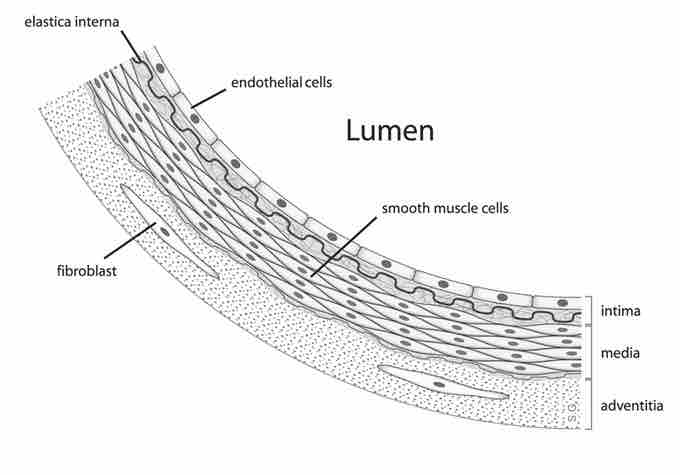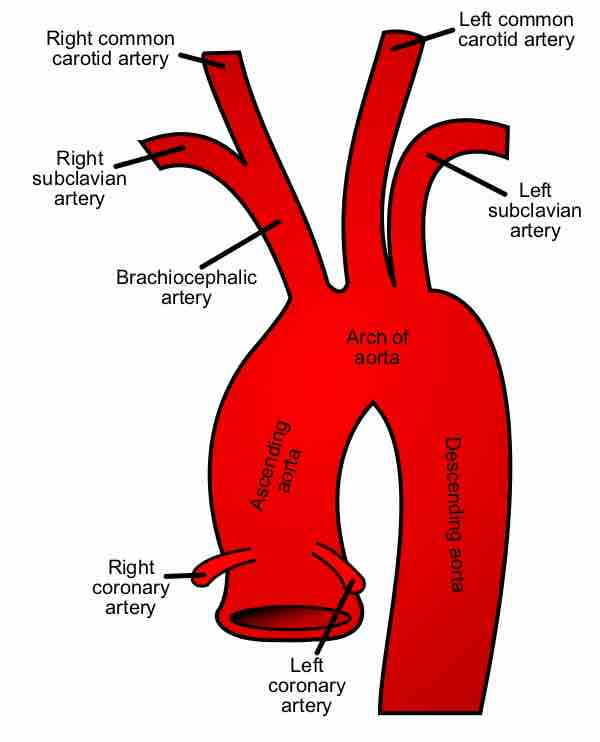Elastic arteries contain larger numbers of collagen and elastin filaments in their tunica media than muscular arteries do, giving them the ability to stretch in response to each pulse.
Elastic arteries include the largest arteries in the body, those closest to the heart, and give rise to the smaller muscular arteries. The pulmonary arteries, the aorta, and its branches together comprise the body's system of elastic arteries. In these large arteries, the amount of elastic tissue is considerable and the smooth muscle fiber cells are arranged in 5 to 7 layers in both circular and longitudinal directions.
Arterial elasticity gives rise to the Windkessel effect, which through passive contraction after expansion helps to maintain a relatively constant pressure in the arteries despite the pulsating nature of the blood flow from the heart.

Anatomy of the Arterial Wall
Arterial wall layers including the tunica intima and the tunica media. In elastic arteries, the tunica media is rich with elastic and connective tissue.
The Aorta
Due to position as the first part of the systemic circulatory system closest to the heart and the resultant high pressures it will experience, the aorta is perhaps the most elastic artery, featuring an incredibly thick tunica media rich in elastic filaments. The aorta is so thick that it requires its own capillary network to supply it with sufficient oxygen and nutrients to function, the vasa vasorum.
When the left ventricle contracts to force blood into the aorta, the aorta expands. This stretching generates the potential energy that will help maintain blood pressure during diastole, when the aorta contracts passively. Additionally, the elastic recoil helps conserve the energy from the pumping heart and smooth the flow of blood around the body through the Windkessel effect.

The aorta
The aorta makes up most of the elastic arteries in the body.